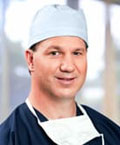Quick Links
Specialties
Contact Info
New York Office
1160 Park Avenue (corner of 92nd Street)
New York, NY 10128
Phone: (212) 876-5200
Fax: (212) 876-4440
Connecticut Office
31 River Road, Suite 102 Cos Cob,
CT 06807
Phone: (203) 863-2003
Fax: (203) 863-2025

 Joseph M. Ajdinovich, M.D.
Joseph M. Ajdinovich, M.D. Jeffrey T. Alwine, D.O.
Jeffrey T. Alwine, D.O. Shariff K. Bishai, M.S., D.O.
Shariff K. Bishai, M.S., D.O. Peter B. Blank, D.O.
Peter B. Blank, D.O. David B. Dickerson, M.D.
David B. Dickerson, M.D. Albert S.M. Dunn, D.O.
Albert S.M. Dunn, D.O. Eric D. Fornari MD
Eric D. Fornari MD Monet A. France, M.D.
Monet A. France, M.D. Mary Ann Gardner, M.D., Lieutenant Commander, Medical Corp, USNR
Mary Ann Gardner, M.D., Lieutenant Commander, Medical Corp, USNR Michael J. Kaplan, MD
Michael J. Kaplan, MD Harish Kempegowda, M.D.
Harish Kempegowda, M.D.  Bradley J. Lawson, M.D.
Bradley J. Lawson, M.D. Sheryl L. Lipnick, D.O.
Sheryl L. Lipnick, D.O. Timothy A. Luke, M.D.
Timothy A. Luke, M.D. Marc J. Philippon, MD
Marc J. Philippon, MD Pedro A. Piza, M.D.
Pedro A. Piza, M.D. Kevin D. Plancher, MD, MPH
Kevin D. Plancher, MD, MPH Alberto R. Rivera-Rosado, M.D.
Alberto R. Rivera-Rosado, M.D. William I. Sterett, MD
William I. Sterett, MD William W. Stewart, M.D.
William W. Stewart, M.D. Francesca M. Swartz, D.O.
Francesca M. Swartz, D.O. Seth R. Miller, MD
Seth R. Miller, MD Paul M. Sethi, MD
Paul M. Sethi, MD  William D. Murrell, MD
William D. Murrell, MD Tyler J. Brolin MD
Tyler J. Brolin MD Thomas B. Evely, DO
Thomas B. Evely, DO Clifford Voigt, MD
Clifford Voigt, MD Karthikeyan Chinnakkannu, MD
Karthikeyan Chinnakkannu, MD Erik Carlson, MD
Erik Carlson, MD Marc S. Kowalsky, MD
Marc S. Kowalsky, MD  Rachel M. Frank, MD
Rachel M. Frank, MD Max N. Seiter, MD
Max N. Seiter, MD Demetris Delos, MD
Demetris Delos, MD Armando F. Vidal, MD
Armando F. Vidal, MD Lauren M. Fabian, MD
Lauren M. Fabian, MD R. Tim Greene, MD
R. Tim Greene, MD Peter J. Millett, MD, MSc
Peter J. Millett, MD, MSc Jaya Shanmugam, M.D.
Jaya Shanmugam, M.D.